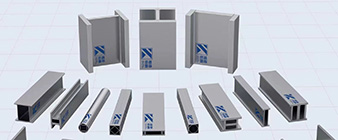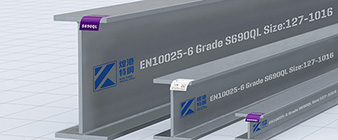Due to the high strength and special properties of S690 steel, careful consideration is required when welding it. The following are important aspects and best practices for welding S690 steel:
Welding process
Common methods: Suitable welding processes include MIG (Metal Inert Gas Welding), TIG (Tungsten Inert Gas Welding) and laser welding. Each method has its advantages, depending on the application.
Preheating: Preheating may be required to reduce the risk of cracking, especially in thicker sections. Typically, a preheating temperature of 100-150°C is recommended.
Filling material
Choice: Use filler materials that meet or exceed the mechanical properties of S690 steel. It is generally recommended to use low-alloy filler wires, such as those classified under EN ISO 15614.
Compatibility: Make sure the filler material is compatible with the base metal to maintain the integrity of the weld.
Welding parameters
Heat input control: Maintain appropriate heat input to prevent overheating, which can lead to reduced toughness and increased risk of cracking.
Travel speed and voltage: Adjust travel speed and voltage based on material thickness and welding process for quality welds.
Post-weld treatment
Stress Relief: Post-weld heat treatment (PWHT) may be required to relieve residual stresses and improve toughness, especially for thicker sections.
Inspection: Conduct a thorough inspection, including visual inspection and non-destructive testing (NDT), to ensure weld quality and integrity.
Welding technology
Stringer Beads vs. Weave Patterns: Use stringer beads for better penetration and control. Braiding can be used for wider joints but will introduce more heat.
Multiple passes of welding: For thicker sections, multiple passes of welding may be required to achieve the required joint strength.
Quality Control
Documentation: Record welding parameters, materials used and inspection results to ensure compliance with standards and specifications.
Standards Compliance: Follow relevant welding standards and specifications (such as EN 1090) to ensure that welded structures meet safety and performance requirements.
Welding S690 steel requires attention to detail and adherence to best practices to ensure a strong and durable joint. Proper selection of welding processes, filler materials and techniques is critical to maintaining material properties and achieving high-quality welds.
-
 2024-9-27 318LN Stainless Steel Structural Beams and Columns
2024-9-27 318LN Stainless Steel Structural Beams and Columns -
 2024-7-16 Advanced high-strength steel 690-laser welding
2024-7-16 Advanced high-strength steel 690-laser welding -
 2024-9-16 2304 VS 1.4362 stainless steel performance
2024-9-16 2304 VS 1.4362 stainless steel performance -
 2024-9-20 2205 duplex stainless steel in water treatment industry applications
2024-9-20 2205 duplex stainless steel in water treatment industry applications -
2024-1-10 Stainless Steel – Austenitic – 1.4404 (316L) Bar and structural Section
-
 2024-9-15 Why choose 1.4301 VS 1.4307 stainless steel?
2024-9-15 Why choose 1.4301 VS 1.4307 stainless steel? -
 2024-9-20 How does high-strength S690 steel play a role in the construction field?
2024-9-20 How does high-strength S690 steel play a role in the construction field?



